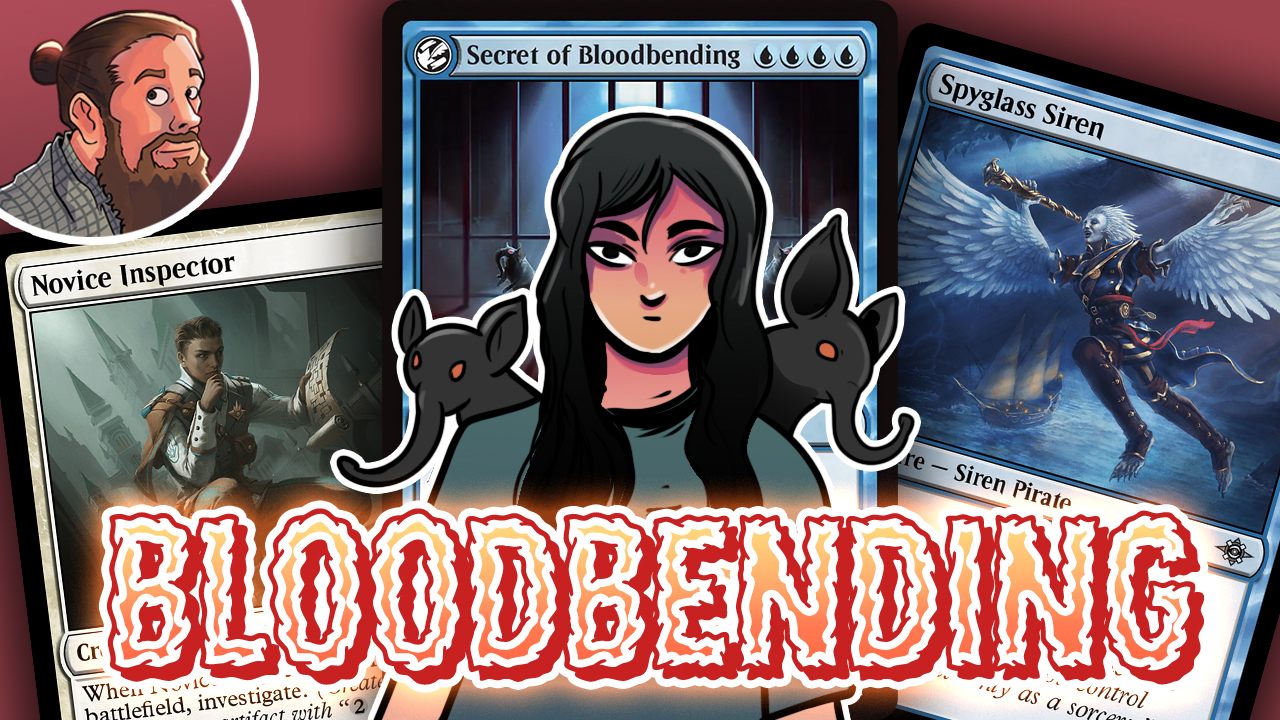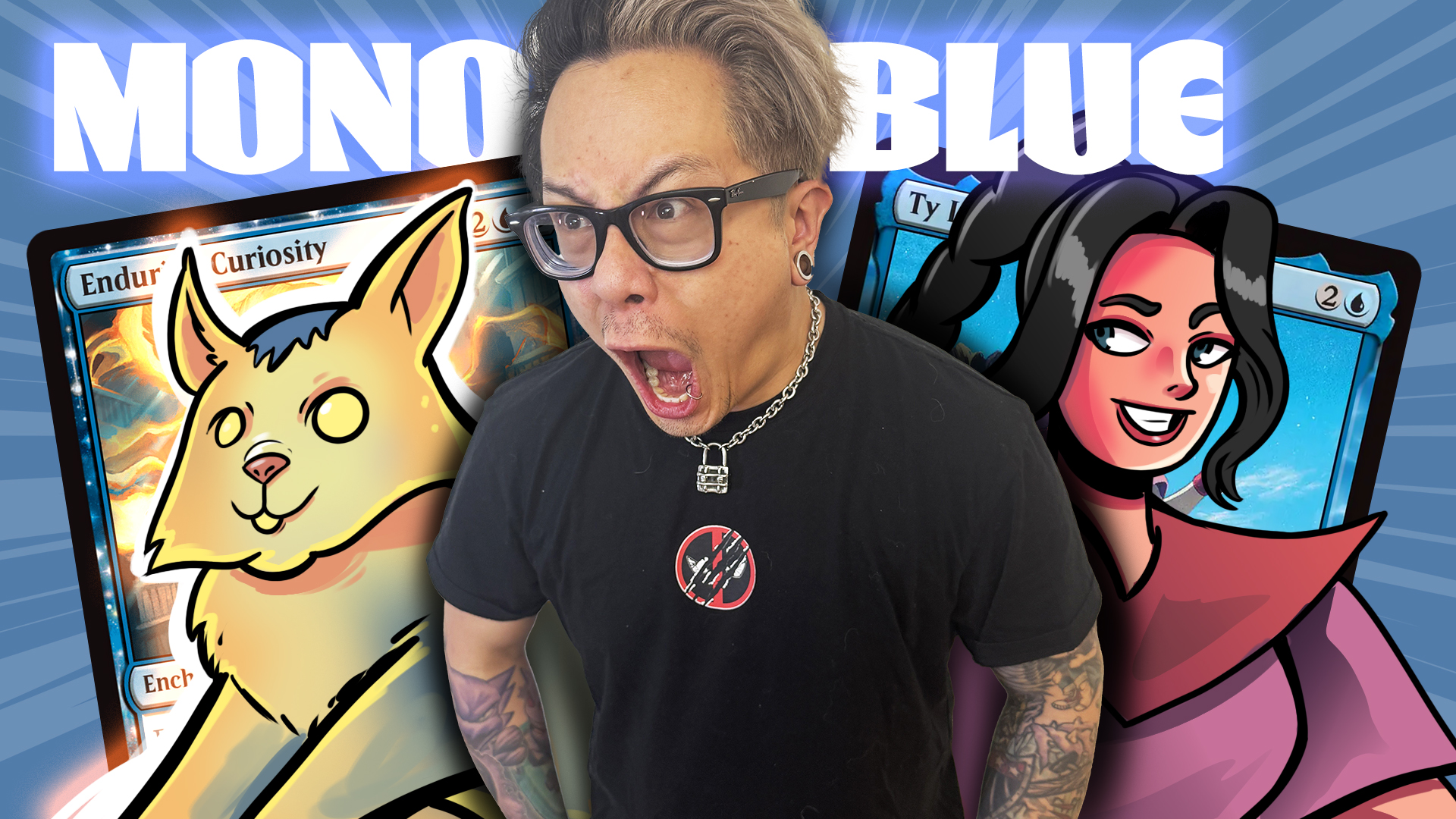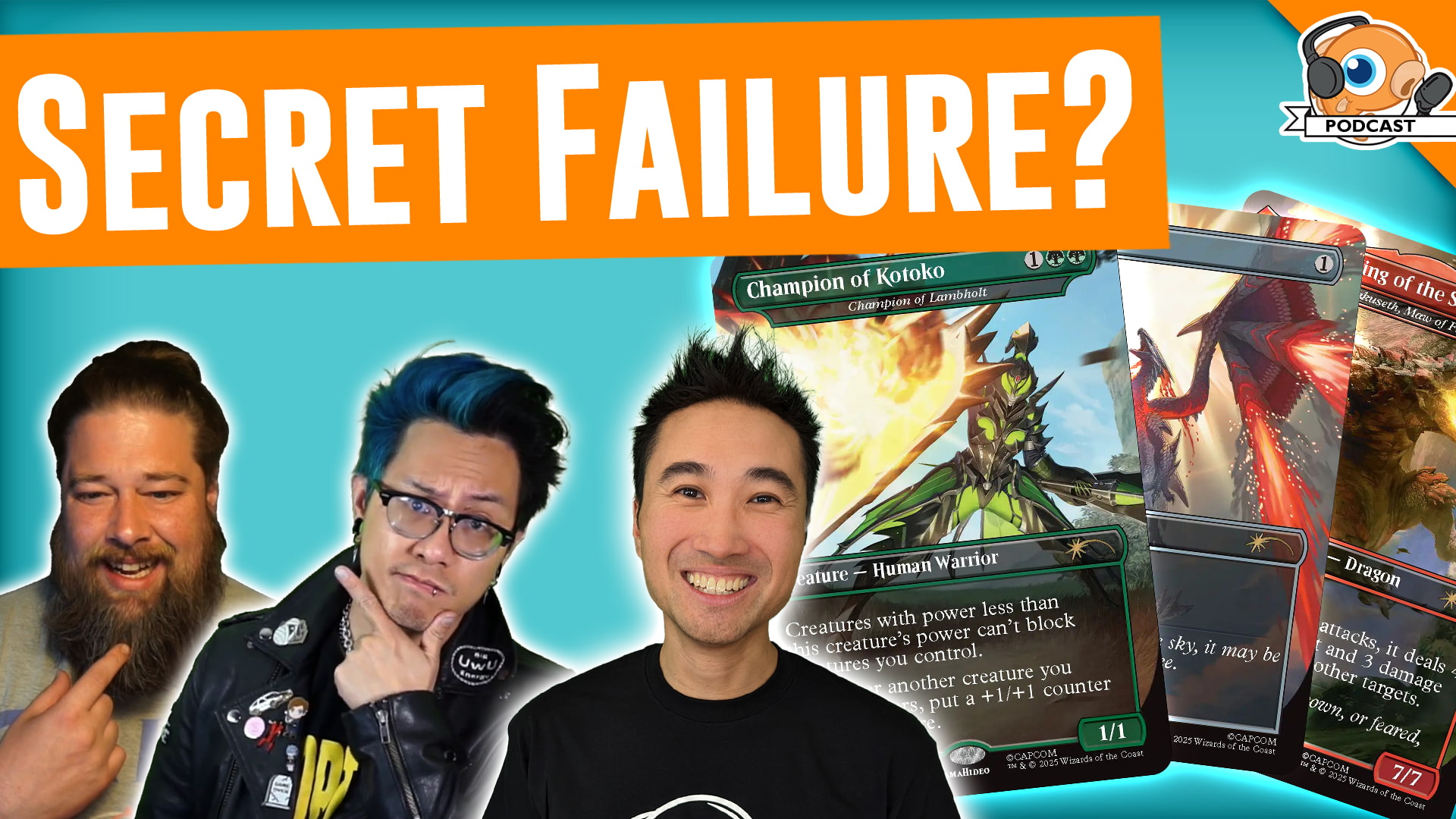Wizards Can't Ban Away Standard's Problems (But They'll Probably Try)
Tomorrow, we get the first of the new post-Pro Tour banned and restricted announcements, and I haven't been able to shake this weird feeling of dread. It was only a couple months ago that Wizards rocked the Standard world by banning three different cards, marking the first banning of Standard cards ever since Caw Blade made up approximately 75% of its Standard format, and the most cards banned in Standard since the dominance of Standard Affinity 15 years ago.
At the time, the community seemed hopeful that, even though there is a significant cost to banning cards in Standard in lost confidence, lost value, and even some players quitting the format (or game as a whole), it would be worthwhile in the end. The format at the time was dominated by three decks—GB Delirium, Mardu Vehicles, and UW Flash / Midrange / Spirits—so banning an important card from each deck seemed like it might shake up the format and make it more diverse. But now, looking back on the bannings with the wisdom of hindsight, we can see that nothing really changed.
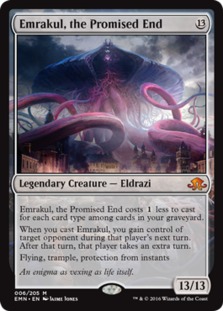

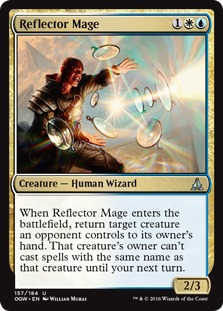
Mardu Vehicles is still Mardu Vehicles and still at the top of the format, even without Smuggler's Copter. GB Constrictor is basically an aggressive version of GB Delirium—instead of ending the game on Turn 6 with Emrakul, the Promised End, it ends it on Turn 5 with Verdurous Gearhulk. Even various Copy Cat combo decks are sort of spiritual successors to UW Midrange, except they can randomly end the game with a two-card combo on Turn 4. The point is that the Standard format today doesn't look much different than it did before the surprising banned and restricted announcement, which means there's a very real question as to whether the benefit of the bannings (which again seems minimal at this point) outweigh the costs.
Because of this, it seems unlikely that more bannings are suddenly going to fix the format (we'll talk more about why Wizards can't simply ban away its problems later). While I do believe that Felidar Guardian is holding back a lot of interesting combo decks (there are so many interesting Turn 5 combo decks in Aether Revolt Standard that seem competitive, until you consider that you can combo on Turn 4 with Felidar Guardian) and think that banning just Felidar Guardian could have a positive impact on the format (by freeing various Paradox Engine, Paradoxical Outcome, and Aetherflux Reservoir decks), based on the last ban announcement, it's hard to imagine Wizards just targeting one deck. If Wizards (in my opinion, rightly) decides to ban Felidar Guardian, the fear is that Wizards will feel like it has to target the other two decks in Standard as well, lest they get too far ahead of the field (basically the Reflector Mage theory of banning cards).



This would lead to a banned announcement of Felidar Guardian; Mardu Vehicles card X (my vote would be Gideon, Ally of Zendikar, although I'm not sure Wizards wants to ban a non-Jace, the Mind Sculptor planeswalker, while others have suggested everything from Scrapheap Scrounger to Heart of Kiran); and GB Constrictor / Energy / Delirium card Y (possibly the namesake Winding Constrictor, but possibly Verdurous Gearhulk or Walking Ballista could do as well).
Now, just so it's clear, this isn't a prediction for tomorrow's announcement, so don't run out and sell all of your cards. Instead, it's more of a fear. Having more Standard bannings, let alone mass Standard bannings, is extremely risky. The cost would be high. I was getting messages from people saying, "I'm 15; I just bought a playset of Emrakul, the Promised End with my birthday money, and I can't play Standard anymore" after the first bannings, and having this happen twice in a two-month period may very well be the final nail in Standard's coffin for some number of players. More importantly, I'm not convinced that banning more cards will solve Standard's problems.
The Problem
While the sample size is small, one thing that's become abundantly clear since the release of Aether Revolt is that, at least at the highest levels, there are really only three decks in Standard: GB, Mardu, and Copy Cat (yes, there are some variations within these archetypes, but there isn't a huge difference in how these variations play, for the most part). At Pro Tour Aether Revolt, these three archetypes made up seven of the Top 8 decks (with the one outlier being a GB list splashing red for some additional removal), and in both Standard GPs to follow the Pro Tour, 100% of the Top 8 decks have fallen into this group.
This is especially scary when you look back to Pro Tour Kaladesh and the latest Standard rotation. At Pro Tour Kaladesh—the first high-level event after rotation, the Top 8 was amazingly diverse. In fact, you could argue that the eight slots were filled by eight different decks (although there is some overlap, such as one deck being RW Vehicles and another Mardu Vehicles). Things tightened up after the Pro Tour, with GB Delirium, UW Flash, and Mardu Vehicles dominating, but out of the four post-PT Standard GPs, we did have four different decks make it into the Top 8 in UR Fevered Visions, UR Colossus, RB Aggro, and RB Zombies.
When you take this information as a whole, it's pretty clear that our post-banning Standard format is actually less diverse than the pre-banning Standard format. While Kaladesh Standard was far from wide open, something like 85% of the decks that made Top 8ts were one of the big three, when in Aether Revolt Standard, we are at a literal 100%. How does this compare to other formats in the past?



Take Khans of Tarkir, for example, a format that was mostly considered to be good, with the exception of the prevalence of Siege Rhino. At Pro Tour Khans of Tarkir, we had mostly Abzan (aggro and midrange) and Jeskai (more burn-heavy and midrange), along with UB Control and Jeskai Ascendancy Combo. This isn't all that encouraging; 75% of the Top 8 was two decks, and the other two were random one-ofs. However, a different story emerges as we move through the first four post-PT Grand Prix. Yes, Abzan is one of the best decks in the format and it takes up the most slots in the Top 8s of the subsequent GPs, but there are tons of new decks as well. At the first GP after the Pro Tour, we saw the emergence of Mono-Red (taking up two Top 8 slots) along with the return of GR Monsters (a favorite of Theros Standard) and Mardu Midrange. At GP Stockholm a week later, nearly half of the slots in the Top 8 went to Jeskai and Abzan, but the rest went to GB Enchantress, Sidisi Whip, Temur Midrange, and Mono-Red. Then, at GP Santiago, Temur Monsters actually surpassed Abzan for the most Top 8 finishes. Finally, about six weeks after the Pro Tour was GP San Antonio, with one of the most diverse Top 8s in recent memory: UW Heroic, Mono-Red Treasure Cruise, Sidisi Whip, Mardu Midrange, Temur Midrange, Jeskai and two Abzan decks.
In the four GPs after the release of Khans of Tarkir, we saw 13 different decks make the Top 8. With Kaladesh, this number was down to seven (and this is a weak seven. In Khans, many of the new decks had multiple Top 8 performances, while all of the Kaladesh decks are one-ofs). Finally, over the first two GPs of Aether Revolt Standard, we've seen zero new decks and a total of three decks take up the Top 8 slots of both GPs.
Now wait, I hear you saying, it's not really fair to compare Aether Revolt (a set release without a rotation) to Khans of Tarkir (a set release with a rotation). Of course, things will be more unsettled when there's a rotation involved. And you are right. The Aether Revolt to Khans comparison isn't that great (although the Kaladesh to Khans comparison is, and it's pretty shocking to see a nearly a 50% decrease in deck diversity in just two years' time). So, instead of comparing Aether Revolt to Khans, let's compare it to Fate Reforged, a fairly lacking and unexciting second set that did not come with a rotation.
| Aether Revolt | Fate Reforged | |
| First Post-PT Grand Prix | GB (x2), Mardu (x2), Copy Cat | Green Devotion (x2), Jeskai, UB Control, Abzan (x2), Sidisi Whip, UW Heroic |
| Second Post-PT Grand Prix | Mardu (x4), GB (x3), Copy Cat | Abzan (x5) RW Aggro (x2), Sultai Control |
| Third Post-PT Grand Prix* | Mardu (x8), Copy Cat (x5), GB (x2), Temur Aetherworks | GW Devotion (x2), Mono-Red Aggro (x2), Abzan (x2), Naya Aggro, Abzan Whip |
| *For AER, the third GP is MOCS finals and has 16 decks | Total decks: 4 (and in all fairness, three, since Temur Aetherworks didn't perform well at the MOCS Championship) | Total decks: 12 |
As you can see, the numbers are pretty shocking. Fate Reforged had three times the number of playable decks in the tournaments following the set's release as Aether Revolt, and this trend doesn't end with Fate Reforged. Last summer is widely held as a horrible Standard. In fact, Collected Company dominated to such an extent that I personally stopped watching coverage of Standard tournaments, but the fact remains that in the two GPs held last summer after the release of Eldritch Moon and before the release of Kaladesh (GP Portland and GP Rimini), there were seven different decks in the Top 8, still double what we've seen in Aether Revolt Standard.

Basically, Aether Revolt is historically lacking in diversity. Somehow, it's significantly less diverse than a recent format (Eldritch Moon Standard) that was widely panned for being a one-deck format (to the extent that Wizards said that, with the new banning policy, it would have banned Collected Company). While I'm sure that we could find other time periods that are similar if we looked over enough sets and formats, even the "bad" Standards of the recent past were significantly more diverse than what we are seeing today, in terms of the number of decks that can Top 8 a Grand Prix-level tournament. Unfortunately, this isn't a problem that banning can fix.
You Can't Ban Your Problems Away
In theory, bannings are a last resort that can fix a format in which one card or deck is simply too good. We've seen this work in the past. When Affinity absolutely dominated Mirrodin Standard and caused players to quit the game, the solution was to ban the key cards from the deck. When Caw Blade was 75% of the Standard format, the problem could easily be solved by banning Jace, the Mind Sculptor and Stoneforge Mystic. In these cases, bad formats became good because the dominant (and unfun) deck was banned from the format. However, the problem is different this time around.



As we saw with the last round of bannings (which, in hindsight, likely made the format less diverse, as strange as that sounds), bannings aren't some magical elixir that suddenly makes a bad (or at least, lacking in diversity) Standard into a good (or diverse) Standard. The problems with our current Standard are pretty much impossible to ban away. Rather than being "Oops, we made Jace, the Mind Sculptor too strong" or "maybe we shouldn't have printed artifact lands," there isn't one card or deck that is dominating our current Standard format. In fact, the list of cards that could be banned sounds downright silly, prominently featuring not just one but two uncommons in Winding Constrictor and Felidar Guardian, along with things like Scrapheap Scrounger. If you had suggested a year ago that we'd be talking about these types of bannings in Standard with a straight face, I would have laughed at you. But this is where we are. As such, a more important question might be why we are at a place where we are even having this conversation.


As far as I can tell, what we are seeing in Aether Revolt Standard is Wizards' chickens coming home to roost, so to speak. It's the culmination of a bunch of small but intentional choices Wizards has made over the past few years as far as the direction of the game itself. This arguably started with the removal (or at the very least, the minimization) of answers from Standard. New players don't like getting their Craw Wurm Doom Bladed and don't want to pay full price for their Emrakul, the Promised End because you cast a Rest in Peace. Getting new players into the game makes the quarterlies look good and keeps the stakeholders and CEO happy. As such, this doesn't seem to be a choice motivated by making the actual game of Magic as good as possible but by other exterior forces.

However, the issues go further than just reducing the power level and number of answers available in Standard. In the past year or two, Wizards has made it clear that it sees Magic not so much as a game but as a brand that it can use to sell merchandise, art books, and maybe even movies someday. The issue is that the push to being a brand rather than a game has had a hugely negative impact on the game itself. We see story cards and mechanics being pushed to absurd power levels (think Emrakul, the Promised End or Vehicles). After all, no one will want to buy an Emrakul, the Promised End bobble head if Emrakul, the Promised End isn't good. We've seen the proliferation of "the Gatewatch," characters who will doubtlessly be essential to the long-rumored "Magic movie." The messages we get from new Wizards CEO Chris Cocks sound eerily like "That Guy,"" the frozen "1980s dollar jockey" who briefly took over as the CEO of Planet Express: "Get back to the farm, shift some paradigms, revolutionize outside the box..."
Basically, it feels like Wizards has sold out. Instead of the primary focus being to make the game as good as possible, the goal is to draw as many new players as possible, or sell as much branded merchandise as possible, or "grow the brand." Now, it's not that any of these goals are bad in and of themselves, and this certainly isn't a "Wizards shouldn't make money" thing. Wizards should make money. Full stop. For better or worse, that is what a corporation is supposed to do. That is how capitalism works. The problem I have is that Wizards' competitive advantage is owning the greatest game on Earth, and when it comes right down to it, the way Wizards makes the most money is by keeping the game as healthy and fun as possible for as long as possible.

Getting new players is great, but it's a bad long-term strategy if you are losing your established player base in the process. Selling art books is awesome, but if you have to break Standard to make sure whatever "face card" of whatever set is good enough to sell the book, whatever small amount of money you are making simply won't keep up with what you are losing when people stop showing up to FNM or building new decks.
Basically, Wizards has a problem that it can't ban its way out of (although I still think Wizards is likely they try tomorrow), and the problem won't be solved until Wizards changes its focus back to making the actual game of Magic as good as possible. In short, Wizards needs to trust that its game is great and the best thing it can do to make money is continuing that greatness, and not get distracted by all of the short-term, bottom-line-inflating cash grabs along the way.
Conclusion
Anyway, that's all for today. Let's end on a hopeful note: Khans of Tarkir wasn't that long ago, and the most significant problems we are having in Standard are relatively new. This means that, with a quick reversal of course (and Wizards has already started, to some extent, by admitting the need for more answers in Standard), Standard can improve. While the problem isn't fixable by banning, it certainly can be fixed, and hopefully the last few months will make Wizards realize that the single most important thing to its success and profits is the success of the game. While movies, stories, figurines, and the like are great, if no one cares about the underlying game, no one will care about any of the merchandise attached to it. Maybe the best news is that Magic is such a great game that it sells itself when working properly. So, if Wizards refocuses its attention on making the actual game of Magic as good as it can be, the movies, stories, figurines, and the rest will come.
As always, leave your thoughts, ideas, opinions, and suggestions in the comments, and you can reach me on Twitter @SaffronOlive or at SaffronOlive@MTGGoldfish.com.


